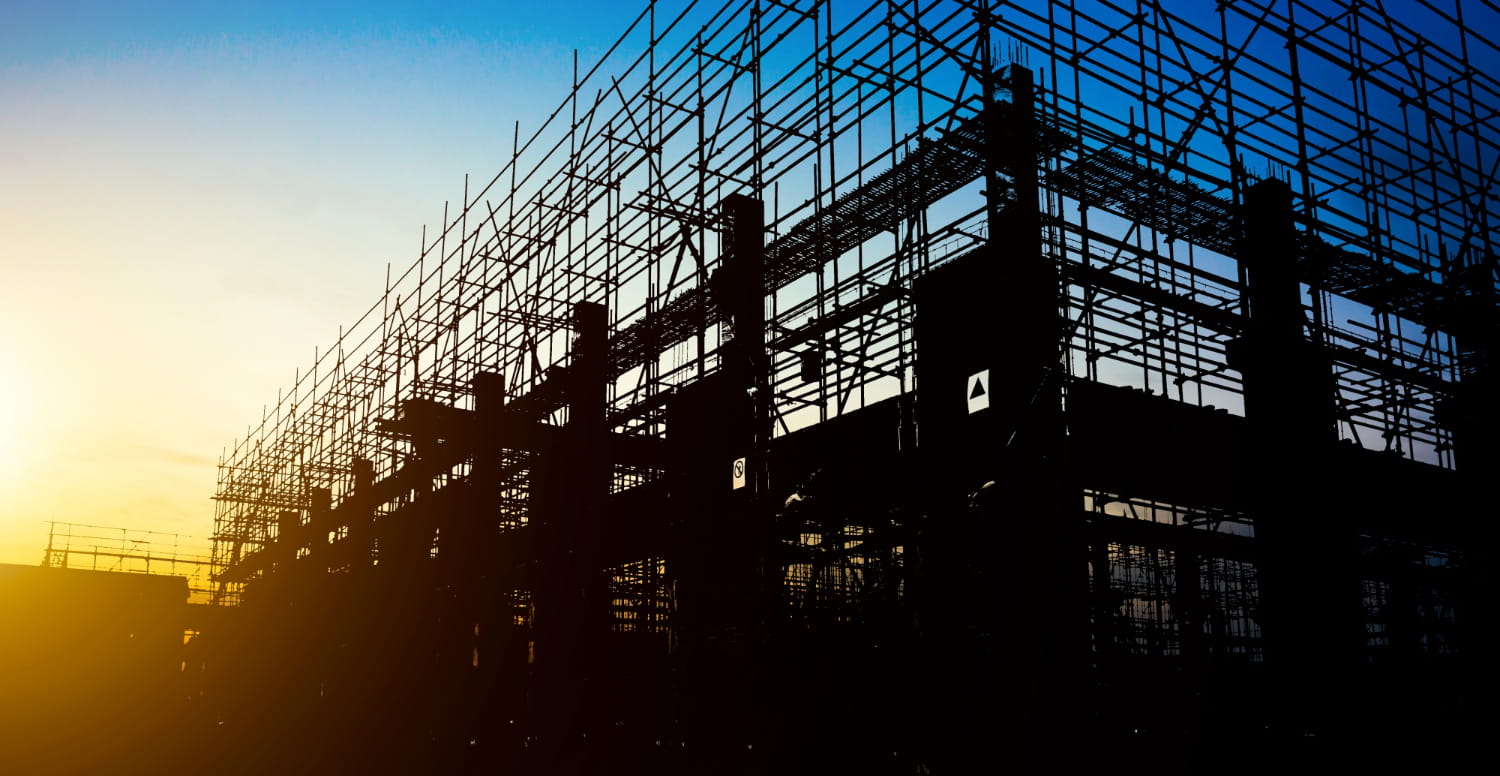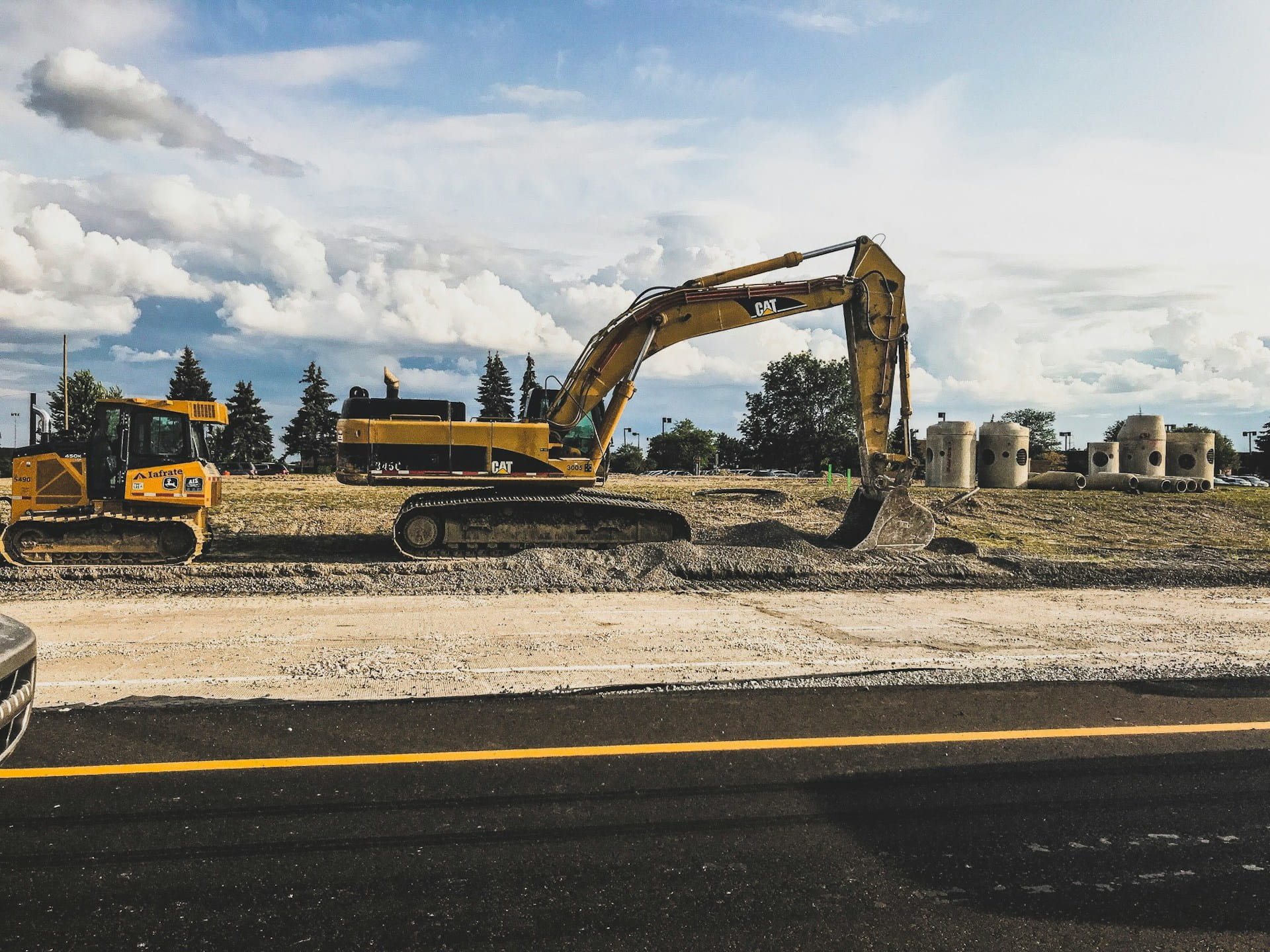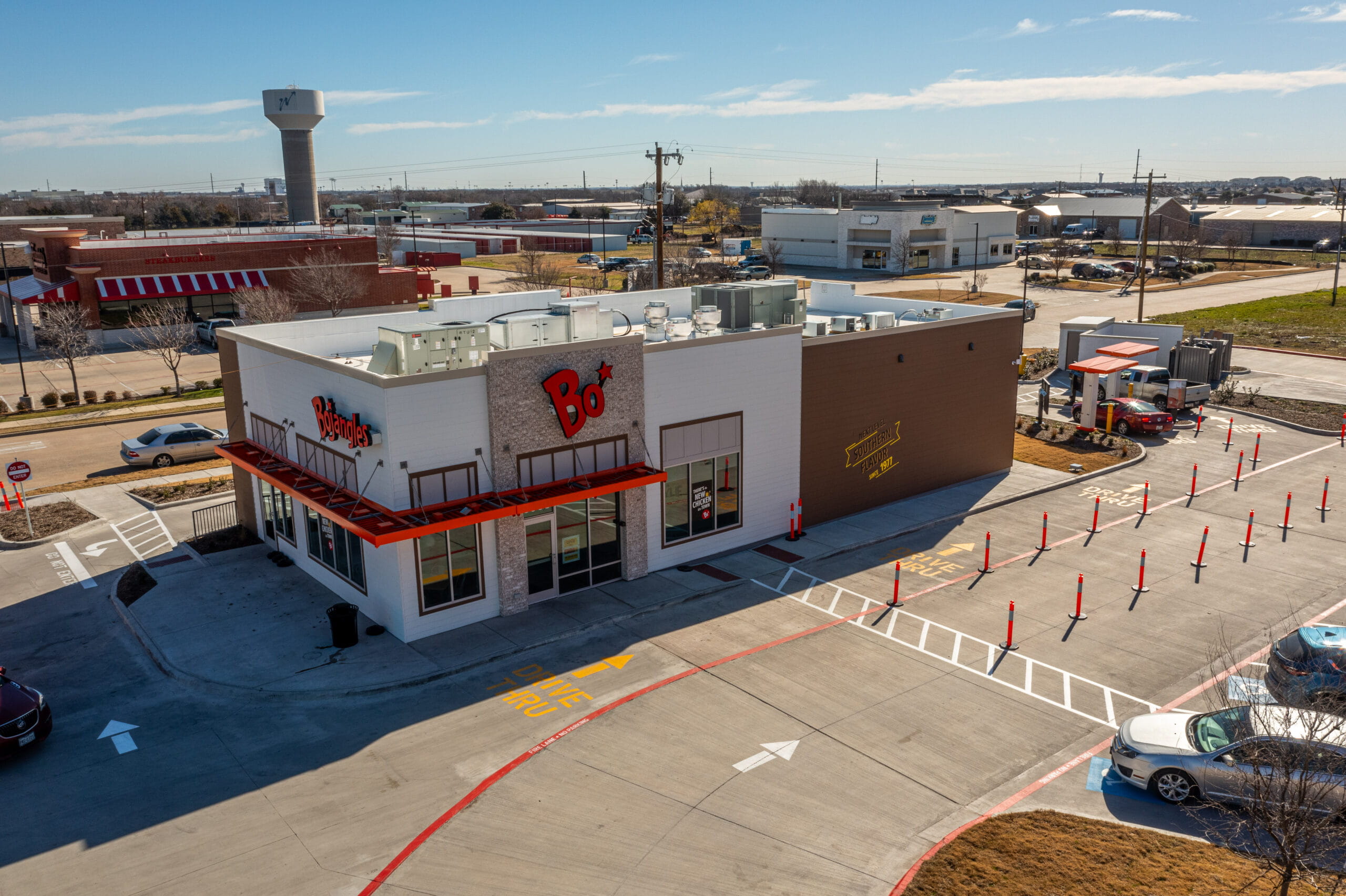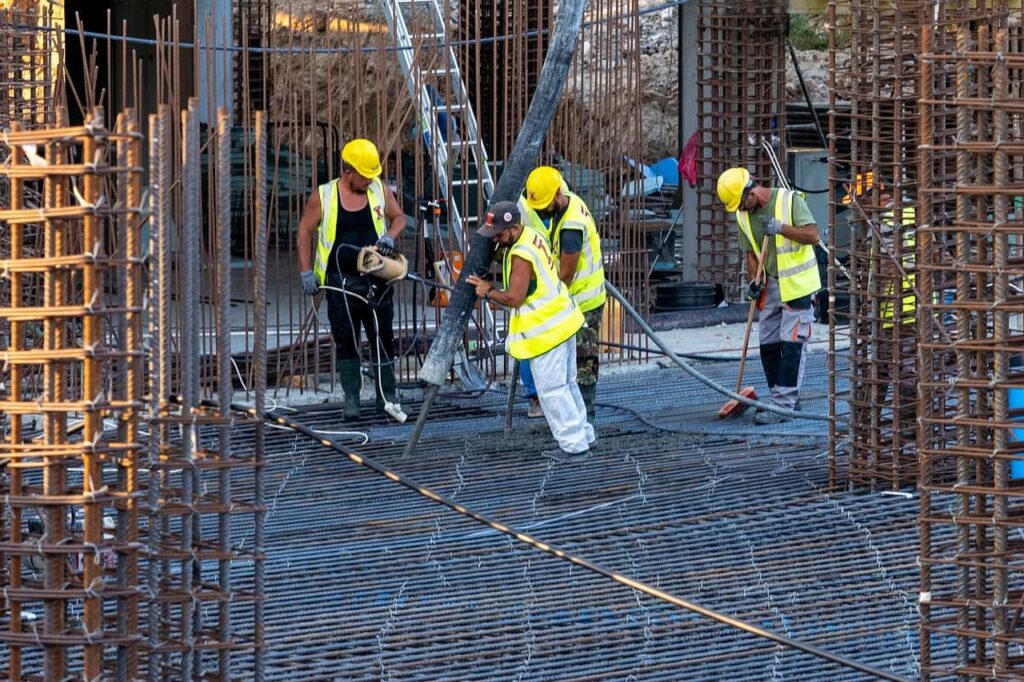Most people outside construction don’t understand different project types. They often wonder about commercial construction versus civil construction projects. These two construction types may seem similar at first glance. However, they serve very different purposes in our communities. Each type requires unique skills, permits, and equipment. Understanding these differences helps anyone planning a construction project. This article explores the key distinctions between these construction categories. We’ll break down complex concepts into simple, easy-to-understand explanations. By the end, you’ll clearly understand both construction types.

Key Differences Between Civil and Commercial Construction
Understanding the distinction between civil and commercial construction helps clarify how different projects serve communities. These two construction types have unique purposes, designs, and oversight requirements. Each sector plays a vital role in building functional spaces for society.
Primary Purpose and Usage
The fundamental difference lies in what each construction type creates and serves. Civil construction projects focus on government initiatives and community infrastructure needs. These projects include water treatment facilities that provide clean drinking water. Sewage systems manage waste to protect public health and environmental safety. Waterways and canals facilitate transportation and prevent flooding in urban areas. Heavy industrial projects like shipyards support maritime commerce and national defense.
Commercial construction creates buildings specifically designed for business operations and profit generation. Office buildings house companies where employees work and collaborate daily. Shopping malls bring together retail stores to create convenient shopping destinations. Factories provide spaces for manufacturing products that consumers use every day. Retail stores offer locations where businesses sell goods directly to customers. Each commercial project aims to facilitate specific business activities and revenue generation.
Types of Projects
Civil construction encompasses large-scale infrastructure projects serving entire communities and regions. Roads and highways connect cities while enabling commerce and personal travel. Bridges span natural barriers to unite separated areas and populations. Tunnels create passages through mountains for more efficient transportation routes. Airports facilitate air travel for both passengers and cargo shipments. Railways move people and freight across long distances economically and efficiently. Water treatment plants ensure safe drinking water for millions of residents. Dams control flooding while generating clean hydroelectric power for communities. Power plants produce electricity that homes and businesses depend on daily. Public parks provide recreational spaces that improve community health and wellbeing. Utility projects deliver essential services like water, gas, and telecommunications.
Commercial construction includes diverse building types serving various business and private needs. Office buildings create professional workspaces for companies of all sizes. Retail spaces and malls house stores selling products to consumers. Hotels provide temporary accommodations for travelers and tourists visiting areas. Restaurants offer dining experiences ranging from fast food to fine dining. Apartment buildings create rental housing options in urban and suburban areas. Warehouses store inventory for distribution companies and online retailers. Hospitals deliver medical care while educational institutions provide learning environments. Industrial facilities manufacture products used in homes and businesses worldwide.
Design Considerations
Commercial construction designs prioritize functionality for business operations and customer experiences. Buildings require comprehensive electrical systems to power equipment and lighting throughout. HVAC systems maintain comfortable temperatures for workers and customers year-round. Plumbing networks provide water and waste management for all building occupants. These centralized systems must efficiently serve multiple tenants within single structures. Design flexibility allows spaces to adapt as business needs change over time.
Civil construction designs emphasize durability, public safety, and environmental sustainability. Projects must withstand decades of continuous use by thousands of people. Specialized equipment and materials handle unique challenges like water pressure and traffic loads. Designs minimize disruption to surrounding communities during construction and operation. Environmental considerations protect local ecosystems while serving human infrastructure needs.
Supporting Infrastructure Requirements
Commercial buildings need integrated systems that support daily business operations efficiently. Electrical infrastructure powers computers, machinery, lighting, and security systems throughout buildings. HVAC networks maintain air quality and temperature control for occupant comfort. Plumbing systems deliver fresh water while removing waste through proper drainage. Fire suppression systems protect buildings and occupants from potential disasters. Communication networks enable internet and phone connectivity for modern business needs.
Civil projects require specialized infrastructure to manage complex engineering challenges effectively. Heavy-duty materials withstand constant use and exposure to weather elements. Drainage systems prevent water damage while managing stormwater runoff appropriately. Traffic management systems keep vehicles and pedestrians moving safely through construction zones. Monitoring equipment tracks structural integrity to ensure long-term public safety. Backup systems provide redundancy for critical infrastructure serving large populations.
Project Oversight and Management
Commercial construction operates under private ownership with business-focused goals and timelines. Business owners and investors closely monitor projects to protect their financial investments. Project managers work to minimize costs while maintaining quality construction standards. Speed remains important as owners want buildings operational to generate revenue quickly. Private oversight allows more flexibility in design changes during construction phases.
Civil construction involves extensive government oversight due to public funding and safety concerns. Government agencies ensure projects meet strict regulatory requirements and building codes. Public input shapes projects through community meetings and environmental impact reviews. Large corporations sometimes sponsor civil projects, adding another layer of oversight complexity. Political considerations can influence project scope, timeline, and budget allocations significantly. Multiple stakeholders create additional coordination challenges throughout the construction process.
Regulatory and Environmental Standards
Civil construction faces stringent government regulations protecting public safety and environmental resources. Projects undergo comprehensive environmental assessments before breaking ground on new infrastructure. Long-term planning requirements ensure infrastructure serves communities for multiple generations effectively. Public safety regulations mandate specific design features and construction methods for durability. Sustainability standards reduce environmental impact while maximizing resource efficiency over time.
Commercial construction follows zoning laws and building codes specific to business properties. Regulations focus on occupancy limits, fire safety, and accessibility for customers. Environmental requirements exist but typically involve less extensive review processes. Green building standards gain popularity as businesses recognize sustainability benefits. LEED certification and similar programs encourage environmentally responsible commercial construction practices.

Understanding Civil Construction
Civil construction focuses on building and maintaining essential infrastructure for communities. This field combines water management, earth works, and transportation systems. Civil construction professionals design, build, and maintain environments that shape daily life.
Core Infrastructure Projects
Civil construction covers many vital public works projects across different sectors. Water reservoirs provide clean drinking water to millions of people worldwide. Subdivisions create organized residential areas where families can build homes safely. Airports connect cities and enable global travel for business and leisure. Roads and railways form transportation networks that move people and goods efficiently. Buildings house offices, schools, hospitals, and other essential community services. Bridges span rivers and valleys to connect separated communities effectively. Sewer systems manage waste to protect public health and environmental safety. Tunnels create passages through mountains and under water for transportation. Dams control water flow and generate clean hydroelectric power for cities.
Industry Professionals and Stakeholders
The civil construction sector includes many different professionals working together collaboratively. Engineers design safe structures that meet community needs and environmental standards. Construction companies employ skilled workers who build these important infrastructure projects. Government agencies oversee projects to ensure public safety and regulatory compliance. Private investors fund developments that benefit communities while generating economic returns. Environmental consultants help minimize ecological impact during construction and ongoing operations.
Essential Project Responsibilities
Civil construction professionals handle numerous critical tasks throughout each infrastructure project. They collaborate with government officials to understand community needs and requirements. They work closely with clients to develop project goals and timelines. They coordinate with architects, engineers, and other specialists for comprehensive planning.
Site evaluation forms a crucial early step in any construction project. Teams investigate soil conditions to ensure stable foundations for structures. They study water drainage patterns to prevent flooding and erosion problems. They analyze traffic patterns to minimize disruption during and after construction. Environmental impact assessments help protect local ecosystems and wildlife habitats.
Planning requires strict adherence to established guidelines and building codes. Local governments set safety standards that all projects must meet completely. Community input shapes projects to serve resident needs most effectively. Client specifications guide design choices to achieve desired outcomes and functionality.
The approval process involves multiple steps before construction can begin. Detailed infrastructure plans must clearly show all project components and specifications. Local authorities review plans to ensure code compliance and public safety. Governing bodies issue permits that allow construction to proceed legally.
Financial planning keeps projects within budget while maintaining quality standards. Cost estimates account for materials, labor, equipment, and potential delays. Contracts clearly define responsibilities, timelines, and payment terms for all parties. Competitive bidding helps secure qualified contractors at reasonable prices for taxpayers.
Project execution requires careful oversight from start to successful completion. Supervisors monitor daily progress to keep projects on schedule effectively. Quality control measures ensure work meets design specifications and safety standards. Regular inspections catch potential problems before they become costly mistakes. Clear communication keeps all stakeholders informed about project status and changes.

Understanding Commercial Construction
Commercial construction involves building projects within the private business sector. This field focuses on creating structures that serve business and commercial purposes. Commercial construction companies specialize in developing spaces where businesses operate and thrive.
Types of Commercial Projects
Commercial construction encompasses many different types of business-oriented building projects. Office spaces provide professional environments where companies conduct their daily operations. Shopping centers create retail destinations that bring together multiple stores and services. Warehouses offer storage solutions for businesses managing inventory and distribution needs. Commercial buildings house restaurants, banks, medical facilities, and other service providers. Entertainment venues include theaters, sports complexes, and conference centers for events. Hotels and hospitality structures accommodate travelers and support local tourism industries.
Working with General Contractors
Business owners need experienced professionals to bring their construction visions to life. Managers often hire general contractors when expanding or renovating existing facilities. Developers partner with contractors to create new commercial properties from the ground up. General contractors coordinate all aspects of commercial construction projects from start to finish. They manage timelines, budgets, and quality standards throughout the building process.
Industrial and Specialized Projects
General contractor companies handle various industrial construction projects beyond standard commercial buildings. Industrial projects include manufacturing plants, processing facilities, and distribution centers for businesses. These specialized structures require unique design considerations for equipment and workflow efficiency. Some contractors focus exclusively on industrial projects due to their technical complexity. Others maintain expertise across multiple construction sectors to serve diverse client needs.
Commercial vs. Residential Construction
Important distinctions exist between commercial and residential construction sectors. Residential construction creates individual housing units like homes and apartment buildings. Commercial construction develops properties for business operations and revenue generation. Building codes and regulations differ significantly between these two construction types. Materials and methods vary based on intended use and occupancy requirements. General contractors often specialize in one sector due to these differences. However, some contractors maintain capabilities in both residential and commercial projects.
Selecting the Right Contractor
Choosing an appropriate general contractor requires careful consideration of their experience and expertise. Complex construction projects demand contractors with specific industry knowledge and proven track records. Business owners should verify a contractor’s experience with similar project types. Ask potential contractors about their industry specializations before making hiring decisions. Request references from past commercial projects to evaluate their work quality. Confirm their licensing and insurance coverage meets commercial construction requirements.
Subcontractor Coordination
Commercial construction projects typically require various specialized trades working together seamlessly. General contractors hire subcontractors to handle specific aspects of construction work. Plumbers install water supply systems and drainage infrastructure throughout commercial buildings. Electricians wire buildings for power distribution and ensure electrical code compliance. HVAC specialists design and install heating, ventilation, and air conditioning systems. Concrete specialists pour foundations and create structural elements for building stability. Roofers ensure weather protection through proper installation and waterproofing techniques. The general contractor coordinates these subcontractors to maintain project schedules efficiently.
Conclusion
Understanding the differences between civil and commercial construction helps you make informed project decisions. Civil construction builds essential infrastructure that serves entire communities for generations. Commercial construction creates business spaces that drive economic growth and employment opportunities. Each sector requires specialized expertise, unique regulatory compliance, and different funding approaches. Whether you’re planning a public infrastructure project or private business development matters. The right construction approach depends on your project’s purpose and goals. Government agencies typically oversee civil projects while private investors control commercial developments. Both construction types shape our communities in meaningful ways every day. Successful projects start with understanding which construction category fits your needs. Working with experienced contractors who specialize in your project type ensures better outcomes. Take time to evaluate your project requirements before selecting construction professionals.
Frequently Asked Questions
What is the main difference between civil and commercial construction?
Civil construction builds public infrastructure like roads, bridges, and water systems for communities. Commercial construction creates private business structures like offices, stores, and warehouses. The key difference lies in purpose and funding sources.
Who oversees civil construction projects?
Government agencies primarily oversee civil construction projects due to public funding involvement. They ensure strict compliance with safety regulations and environmental standards. Public input also shapes these projects through community meetings.
What types of buildings fall under commercial construction?
Commercial construction includes office buildings, retail stores, restaurants, hotels, and warehouses. It also covers hospitals, schools, and industrial facilities for businesses. These structures generate revenue or provide private sector services.
Do civil and commercial construction require different permits?
Yes, civil construction faces stricter government regulations and environmental assessments. Commercial construction follows zoning laws and building codes for business properties. Both require permits, but civil projects undergo more extensive review processes.
Can one contractor handle both civil and commercial projects?
Some general contractors maintain expertise in both civil and commercial construction sectors. However, many specialize in one area due to different requirements. Always verify a contractor’s experience with your specific project type.

